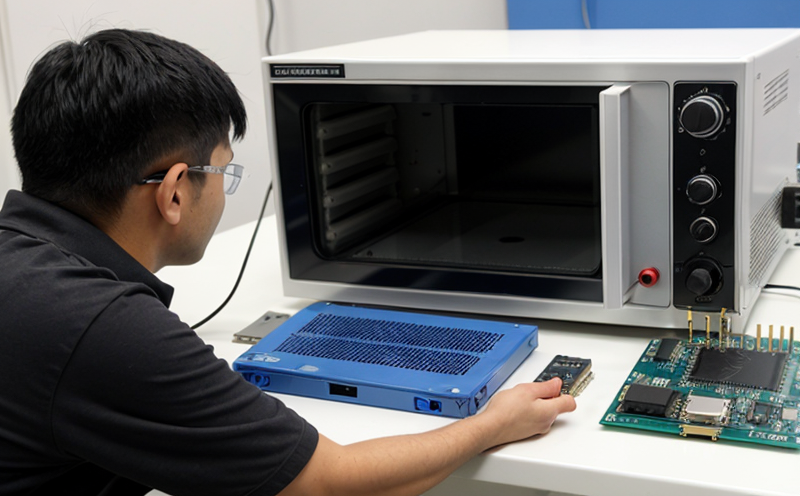IEC 62396 Radiation Hardness Testing for Microelectronics
IEC 62396 radiation hardness testing is a critical process in ensuring that microelectronic components can withstand the harsh environmental conditions they encounter in space and other extreme environments. This standard is essential for industries such as aerospace, defense, and telecommunications where reliability under high-radiation exposure is paramount.
The test involves subjecting microelectronics to ionizing radiation similar to that found in space or nuclear reactors. The goal is to assess the component's ability to maintain its performance parameters after being exposed to these conditions. This testing ensures that components used in critical systems will not fail unexpectedly, thereby enhancing system reliability and safety.
Microelectronic devices are particularly vulnerable to radiation-induced damage due to their small size and high integration levels. Radiation can cause defects within the semiconductor material or disturb the device's electrical characteristics, leading to performance degradation or total failure. IEC 62396 provides a standardized method for evaluating this susceptibility, ensuring that only robust components reach final application.
The testing process typically involves placing microelectronic components inside a radiation chamber where they are exposed to high-energy particles such as protons or electrons. The exposure levels can be adjusted based on the expected operational environment of the device. After exposure, the devices undergo rigorous testing using various electrical and functional tests to assess their integrity.
One of the key challenges in IEC 62396 radiation hardness testing is achieving a balance between simulating real-world conditions accurately while avoiding excessive stress that could lead to premature failure during testing itself. This requires precise control over all variables, including dose rate, temperature, and humidity. The test parameters must be carefully chosen to reflect the worst-case scenario for the intended application without being overly conservative.
Another critical aspect is ensuring uniform exposure across all components within a batch. Non-uniformities can lead to unreliable results and false negatives or positives regarding radiation tolerance. Advanced chamber designs and sophisticated measurement techniques are used to minimize such variations, providing more accurate assessments of each component's true radiation hardness.
The testing process also involves detailed documentation and reporting. Each test run should record all relevant parameters, including the type and intensity of radiation, temperature during exposure, duration of exposure, and post-exposure tests performed on the device. These records are crucial for traceability and quality assurance purposes.
Given its importance in ensuring reliability across critical applications, IEC 62396 radiation hardness testing is a cornerstone of modern electronics development and manufacturing processes. By adhering to this standard, manufacturers can build confidence that their products will perform reliably under extreme conditions, ultimately contributing to safer and more dependable systems.
Applied Standards
| Standard | Description |
|---|---|
| IEC 62396:2011 | Radiation Hardness of Semiconductor Devices - Evaluation Methods and Acceptance Criteria. |
| ISO/IEEE 785-2014 | Electrical Characteristics of Electronic Components in Space Systems - Particular Considerations for Radiation-Hardened (RadHard) Components. |
| ASTM F796-13 | Determination of Single Event Latchup Sensitivity Using a Single Pulse Test. |
| NASA/STD-8719.8B | Electrical Characteristics of Electronic Components in Space Systems - Particular Considerations for Radiation-Hardened (RadHard) Components. |
Eurolab Advantages
Eurolab offers state-of-the-art facilities and expertise to perform IEC 62396 radiation hardness testing for microelectronics. Our team of experienced engineers and technicians ensures that every aspect of the test is conducted meticulously, adhering strictly to international standards.
- Highly specialized radiation chambers capable of simulating various space environments.
- Advanced measurement equipment for precise dose control and uniform exposure.
- Detailed record-keeping and reporting capabilities to ensure comprehensive documentation.
- Comprehensive training programs for clients seeking to understand the nuances of IEC 62396 testing.
We pride ourselves on delivering accurate, reliable results that meet or exceed industry expectations. Our commitment to quality control and continuous improvement ensures that our services remain at the forefront of technological advancement.
Frequently Asked Questions
Competitive Advantage and Market Impact
- Pioneering IEC 62396 testing services with cutting-edge facilities.
- Serving a diverse client base from leading aerospace, defense, and telecommunications companies.
- Offering unparalleled expertise in interpreting test results to guide product development decisions.
- Educating clients on the latest trends and best practices in radiation hardness testing through workshops and seminars.
Our commitment to excellence positions Eurolab as a leader in providing robust, reliable microelectronics for high-stakes applications. By leveraging our advanced capabilities, we help companies stay competitive in an increasingly demanding global market.





